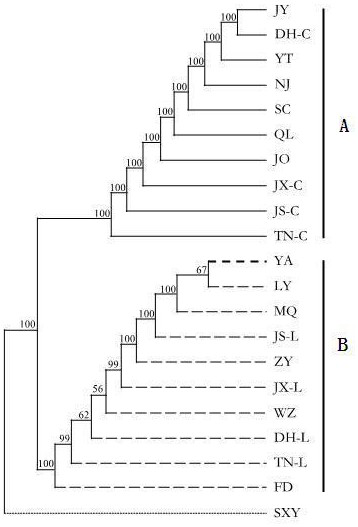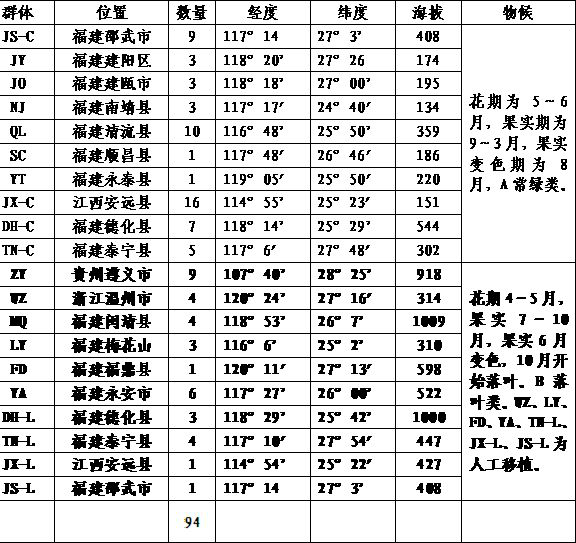Classification and identification method for evergreen and deciduous euscaphis japonica molecular markers
A technology of molecular markers and Javenica, which is applied in the field of classification and identification of plant molecular markers, and can solve the problems of poor practicability
- Summary
- Abstract
- Description
- Claims
- Application Information
AI Technical Summary
Problems solved by technology
Method used
Image
Examples
Embodiment 1
[0016] A total of 94 samples were collected from 13 natural populations of Corvus japonica across the country. The sampling information is shown in Table 1. The phenotypes of flowers, leaves and fruits of these populations were recorded in detail. Young leaves were collected for simplified genome sequencing and high-quality SNP loci were mined; Based on SNPs, use MEGA X software to construct a Neighbor-joining phylogenetic tree such as figure 1 ; The results show that: with the SXY Shanxiangyuan of the Shenggu Oilaceae as the outer group, the evergreen A. japonica and the B. deciduous ya. , which is located at the last evolutionary branch of deciduous species, can confirm that YA Jianning's Ardentia arvensis is a variant of Arthus arvensis.
[0017] Table 1 Sampling information of the wild crow population
[0018]
PUM
 Login to View More
Login to View More Abstract
Description
Claims
Application Information
 Login to View More
Login to View More - R&D
- Intellectual Property
- Life Sciences
- Materials
- Tech Scout
- Unparalleled Data Quality
- Higher Quality Content
- 60% Fewer Hallucinations
Browse by: Latest US Patents, China's latest patents, Technical Efficacy Thesaurus, Application Domain, Technology Topic, Popular Technical Reports.
© 2025 PatSnap. All rights reserved.Legal|Privacy policy|Modern Slavery Act Transparency Statement|Sitemap|About US| Contact US: help@patsnap.com


